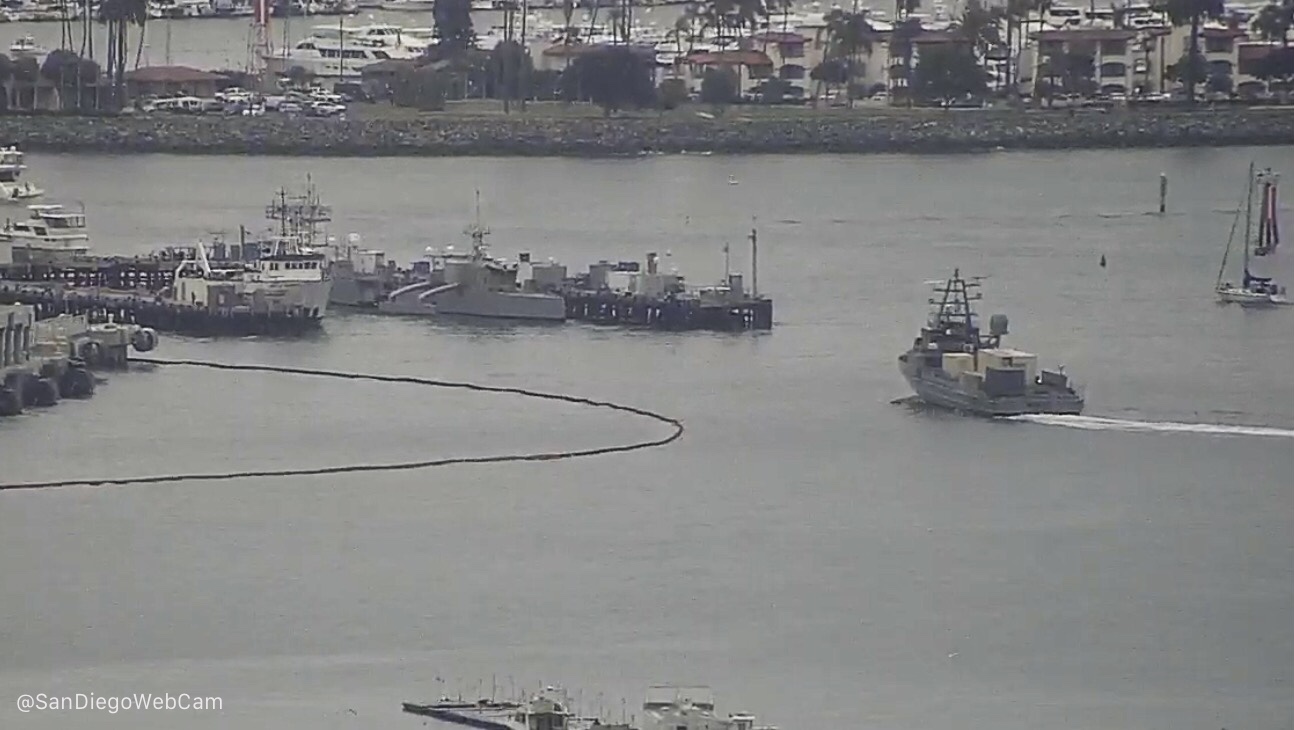
NATIONAL HARBOR, Md. — The emerging fleet of U.S. military Large Unmanned Surface Vessels (LUSV) are set to navigate the open seas, avoid other vessels and carry out complex directives from a land-based command center over a secure commutations network. What they can’t do yet is pump their own gas.
For the foreseeable future, the LUSVs will require a small crew detachment aboard to carry out tasks not conducive to machines.
“We do envision accommodations for a small detachment of personnel. Those people are not intended to be driving or operating the boat directly, but we provide those accommodations as a risk manager for operations, that can’t be automated or haven’t been automated yet, like refueling,” Capt. Pete Small, Navy Program Manager for USVs, said Monday at the Sea Air Space 2021 symposium.
“They could still be aboard also for force protection or other measures that are required as we continue to refine concepts of operations.”
As envisioned, the LUSVs are designed to carry a vertical launch system that will provide additional missile capacity for the Navy’s fleet of guided-missile cruisers, destroyers and emerging Constellation-class (FFG-62) frigates.
“It’s an extra magazine,” Small said.
The Navy and the Office of the Secretary of Defense’s Strategic Capabilities Office are continuing to wring out the concept through the testing of two Ghost Fleet ships that are operating off the West Coast. The converted offshore support vessels, Nomad and Ranger, will be joined by two additional purpose-built unmanned test ships for additional experimentation as part of the Navy’s Surface Development Squadron One.
“The current way we operate them is that we pilot the USVs into and out of port in manual mode with a small crew on board. This is consistent with the Navy’s plans for medium USV and large USV,” Small said last week at a virtual conference hosted by the Association for Unmanned Vehicle Systems International (AUVSI).
“Once the USVs is in the open ocean, we make the transition to autonomous mode and continue with operations that include remote mission planning, command and control and supervision.”
In terms of how manning evolves for LUSV, “we’re going to flesh that out over the next several years,” Small said.
Last year, the Navy issued $42 million in contracts for LUSV studies, with Austal USA, Huntington Ingalls Industries, Fincantieri Marinette, Bollinger Shipyards, Lockheed Martin and Gibbs & Cox each winning about $7 million apiece.





